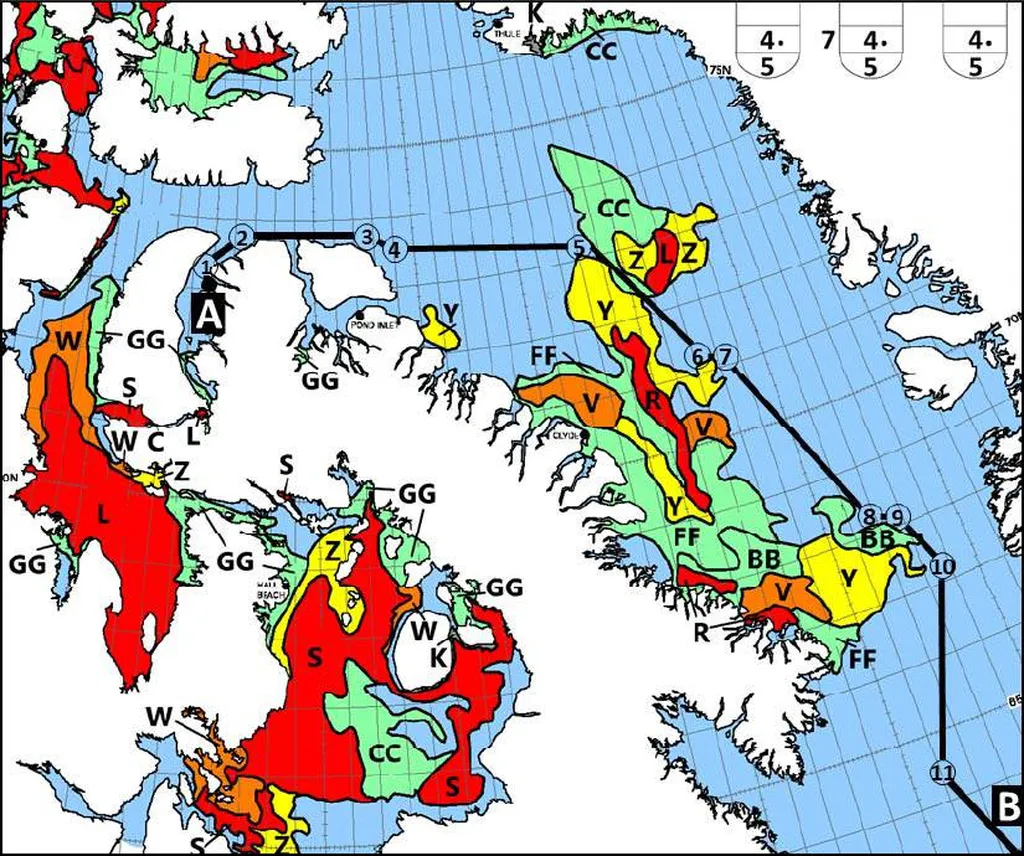In a significant stride towards enhancing Arctic maritime safety, researchers have turned to machine learning to better assess navigation risks for low ice-class vessels. The study, led by Yuanyuan Zhang from the School of Geographical Sciences at Liaoning Normal University in Dalian, China, and published in the Journal of Marine Science and Engineering, explores how machine learning models can outperform traditional methods in evaluating sea ice navigation risks.
The research focuses on the Northeast Passage (NEP), a critical Arctic shipping route. Traditional navigation risk assessment models, which rely heavily on empirical coefficients and sea ice parameters, have shown limitations in accurately identifying risks. Zhang and her team employed Automatic Identification System (AIS) data as positive samples and manually interpreted non-navigable data as negative samples. They then applied ten different machine learning models to capture the complex relationships between ice conditions and navigation risks for Polar Class 6 and Open Water vessels.
The results were promising. Most of the machine learning models demonstrated significantly improved classification accuracy compared to traditional models, particularly for Polar Class 6 vessels. “The navigation risk output by ML models is strongly determined by sea ice thickness,” Zhang noted, highlighting a key finding of the study. This improved accuracy could translate to safer and more efficient Arctic maritime transport, a sector that has seen growing interest due to melting sea ice opening up new shipping routes.
The study also identified specific areas along the NEP, such as the East Siberian Sea and the Vilkitsky Strait, as particularly challenging for navigation, especially during the months when sea ice melts and reforms. This information could be invaluable for shipping companies planning routes and schedules, as well as for insurance companies assessing risks.
From a commercial perspective, the findings present opportunities for maritime sectors to leverage machine learning for better risk assessment and route planning. As Arctic shipping continues to grow, the demand for accurate and reliable navigation risk assessment tools will likely increase. Companies that can integrate these advanced models into their operations may gain a competitive edge.
Moreover, the study’s insights could inform policy decisions and international regulations regarding Arctic shipping. As Zhang puts it, “These findings offer valuable insights for enhancing the safety and efficiency of Arctic maritime transport.” By providing a more nuanced understanding of navigation risks, the research could contribute to the development of safer shipping practices and more robust risk management strategies.
In essence, this research underscores the potential of machine learning to revolutionize navigation risk assessment in the Arctic. As maritime professionals continue to navigate the challenges and opportunities presented by the changing Arctic environment, tools like these will be invaluable. The study, published in the Journal of Marine Science and Engineering, serves as a testament to the power of data-driven approaches in enhancing maritime safety and efficiency.

